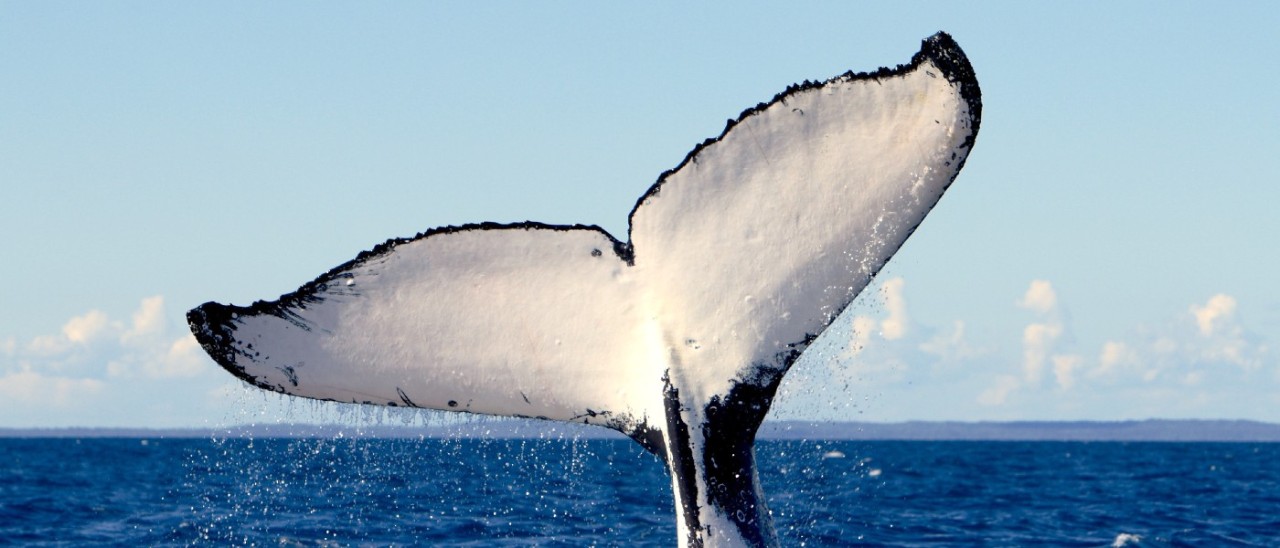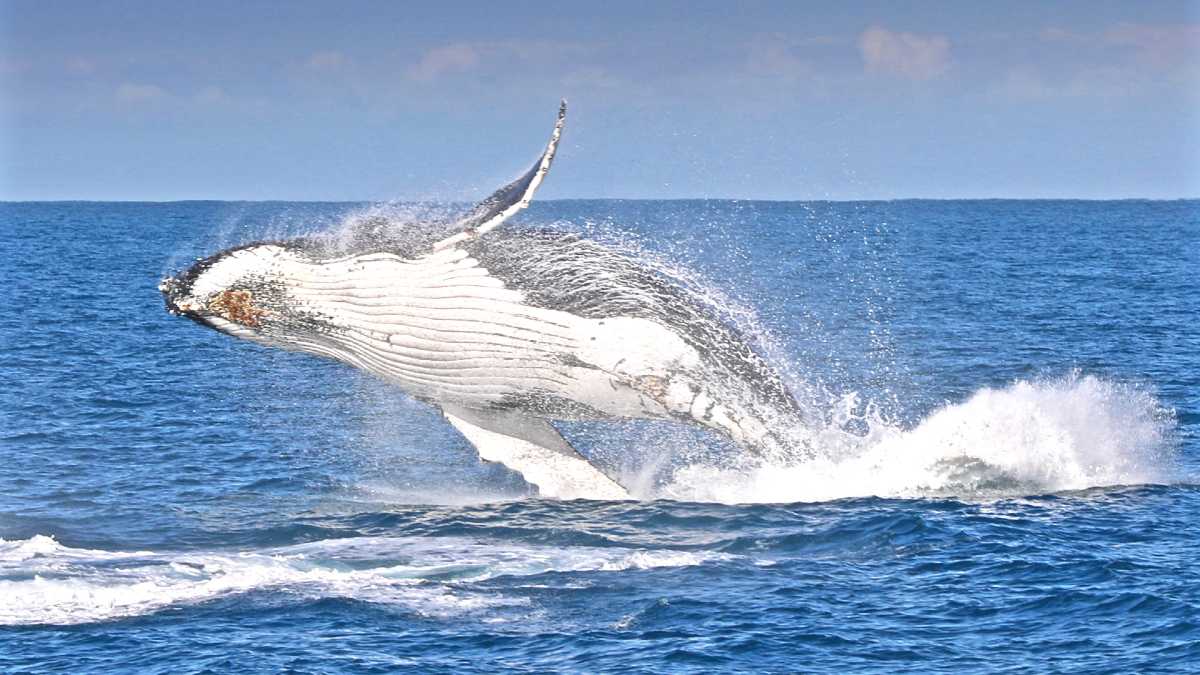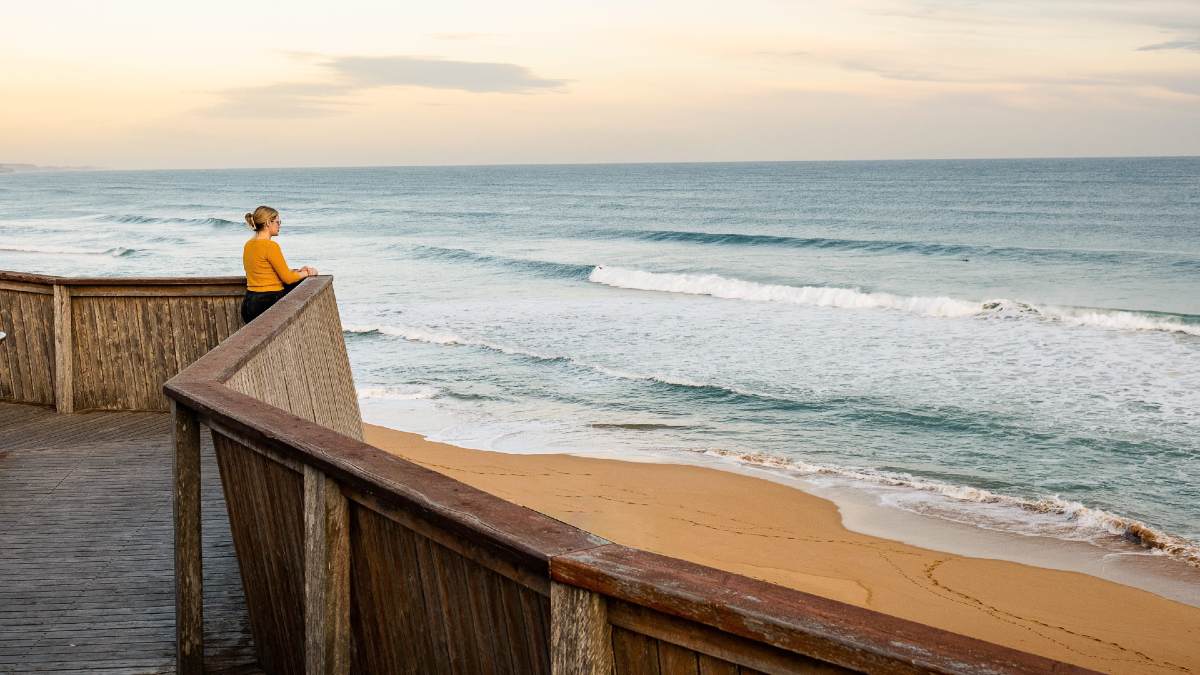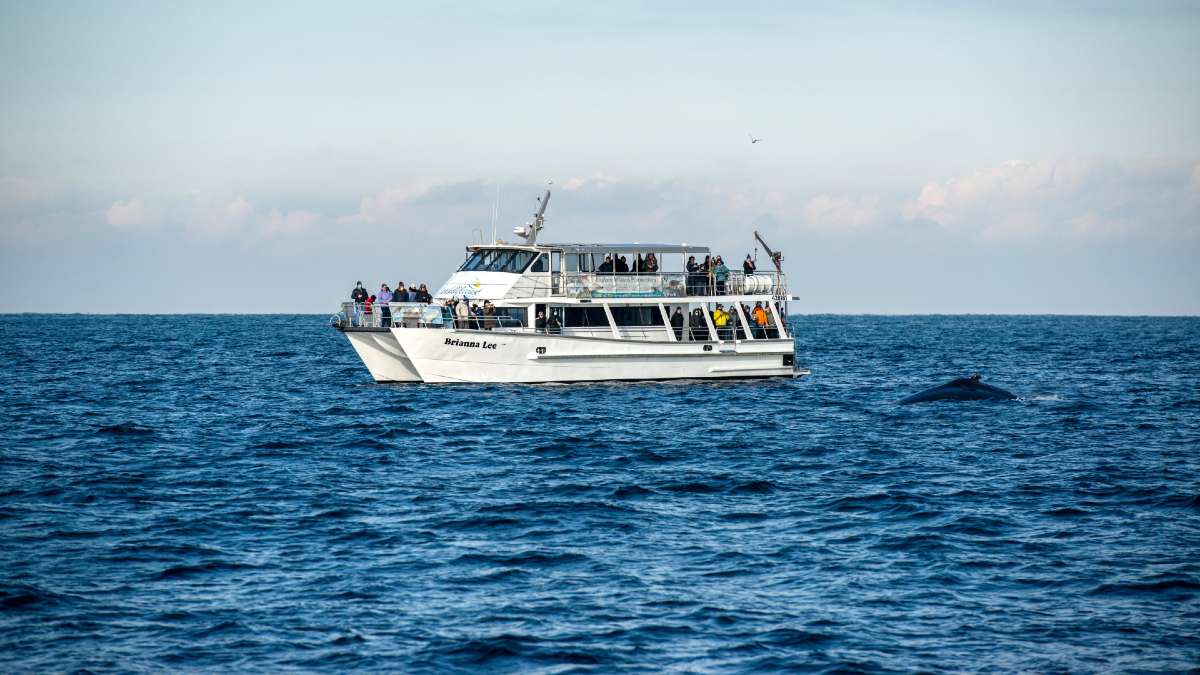From dinosaur remains to pristine beaches and local eateries, here are the top attractions to experience in the Victorian seaside town of Inverloch.
When to whale watch in Victoria and best spots

With a large proportion of the world's whale population found in Australian waters, it's easier than you might think to get up close to the world’s largest mammals.
From May to November, Victoria's southern coast transforms into a marine theatre as humpback whales, southern right whales, and even elusive blue whales migrate from Antarctic feeding grounds to the warmer waters off Queensland to breed and raise their calves.
When is the best time to see whales in Victoria, and where can you go to spot these magnificent creatures of the sea?
Love nature and wildlife experiences?
The best time for whale watching in Victoria
If you’re looking to see as many whales as you can, keep your eyes peeled in Victoria during their annual migration season from May to November.
Southern right whales often come close to shore from June to August, although they can be spotten any time from May to November.
Humpback whales migrate north from May to July, then return southward with their calves from September to early November.
Blue whales and orcas, though less commonly seen, are occasionally spotted from May to July in deeper waters.
Fun fact: orcas, while commonly known as 'killer whales', are actually part of the dolphin family!

A section of the Great Ocean Road, known as the Whale Trail, is a popular destination for whale watching. Image: Visit Victoria
Where to see whales in Victoria
The best places to see whales in Victoria include Logan's Beach in Warrnambool, Phillip Island, Wilsons Promontory, Cape Otway Lightstation, Queenscliff Harbour and Ninety Mile Beach.
Portland
Whether you're extending your trip on the Great Ocean Road or tackling a road trip from Melbourne to Adelaide, one stop you can't miss for whale watching is Portland. This coastal town is sometimes called Australia's whale capital, and for good reason: southern right whales, humpback whales and even orcas often visit Portland and Bridgewater Bay in winter.
Look for the whale flag outside the Portland Visitor Information Centre. If it's flying, there's a great chance of whale spotting that day. You can also check the Facebook page Whalemail for the latest whale sightings in the area.
While in Portland, make sure to visit the Portland Maritime Discovery Centre to see a 14-metre long sperm whale skeleton and marvel at the size of these gentle giants.
Phillip Island
Just 140km south of Melbourne, Phillip Island is a popular spot for observing humpback whales during their migration. The island's clear winter skies and calm seas enhance the whale watching experience. Cape Woolamai, Surf Beach, Pyramid Rock, and the Nobbies are all great areas to spot whales from land on Phillip Island.
Regular whale watching tours are available from Phillip Island between June and early August, departing from San Remo and Rhyll. These tours explore the waters around Phillip Island for humpback whales, southern right whales, dolphins, fur seals, albatross, gannets and more.
While you're on Phillip Island, why not pair your whale watching with the Penguin Parade? This experience gets you up close to a little penguin colony that swims in from the ocean each sunset to return to their burrows.
Wilsons Promontory
Wilsons Promontory National Park in Gippsland offers a picturesque backdrop for whale watching. Visitors can enjoy views of humpback whales and occasionally southern right whales as they migrate along the coast. Land-based sightings are possible from elevated coastal trails and lookouts, such as those near the Wilsons Promontory Lightstation. Hikers have reported observing whales breaching and spouting from these vantage points during the migration period.
Whale watching tours are available off Wilsons Promontory, departing from Port Welshpool from late August to early November. Passengers have a high chance of spotting migrating humpback and southern right whales, dolphins, fur seals, sea eagles and more.
If you're exploring Gippsland, Inverloch is a great pit stop between Phillip Island and Wilsons Promontory, with accommodation ranging from luxurious rooms to a caravan park.
Warrnambool
The coastal town of Warrnambool, situated along the Great Ocean Road, offers a unique opportunity to witness southern right whales from land-based viewing platforms. Each year, from late May to August, adult female southern right whales arrive at Logan's Beach to give birth and nurture their calves, often staying until mid to late September.
The dedicated viewing platforms at Logan's Beach provide an excellent vantage point to observe these majestic creatures as they frolic just meters from the shore.
Cape Otway
Visit Cape Otway between May and October for the chance to see numerous whale species passing close to the shoreline on their annual migration: humpback whales, southern right whales, blue whales and even occasionally orcas.
Head to the Cape Otway Lightstation for your best chance at whale watching. The elevated position of the lighthouse and nearby viewing platforms provides excellent opportunities to observe these majestic creatures as they breach, spout or tail-slap near the shore. The area also features a Whale Interpretive Area, offering educational displays to help visitors identify different whale species and understand their behaviors.
Queenscliff Harbour
You can potentially see whales from Queenscliff Harbour from June to October. The harbour's location at the entrance of Port Phillip Bay, surrounded by water on three sides, provides a strategic vantage point for spotting marine life like humpback whales and southern right whales.
For land-based viewing, the 42m observation tower at Queenscliff Harbour offers panoramic views of the bay, increasing your chances of spotting whales and other marine animals. There are also piers and vantage points for additional land-based whale spotting.
If you're interested in a closer encounter, consider joining a local wildlife sightseeing tour departing from Queenscliff Harbour. Marine life you're likely to encounter includes fur seals, Burrunan dolphins, and, of course, whales.
Ninety Mile Beach
You can see whales from Ninety Mile Beach in Gippsland during the annual migration season. This expansive stretch of coastline, running from Port Albert to Lakes Entrance, offers several vantage points for land-based whale watching.
From June to July whales migrate northward, and from September to November they return southward, often accompanied by their calves. During these periods, whales can often be seen close to the shoreline. Golden Beach, in particular, is noted as one of the best on-land vantage points for whale watching.
Start your adventure at Inverloch, then follow the coastline to Ninety Mile Beach.

Logan's Beach has a dedicated whale watching platform. Image: Visit Victoria
What makes a good whale watching cruise?
Whale watching in Victoria is an unforgettable experience, especially during the annual migration of humpback and southern right whales along the southern coast. But not all cruises are created equal. Choosing the right one can make the difference between a decent outing and a truly awe-inspiring encounter with the giants of the deep.
A great whale watching cruise starts with timing. In Victoria, the best months for sightings are typically from May to October, when whales migrate close to shore. Booking during peak season increases the chances of multiple sightings and even rare behaviors like breaching or tail slapping.
Equally important is the experience and approach of the cruise operator. Reputable operators maintain respectful distances, minimise noise, and follow guidelines to protect both the whales and their habitat. The best tours are led by knowledgeable marine naturalists who provide insightful commentary about whale behaviour, ecology, and conservation. Wildlife Cruises, for example, works with local research partners to help track, identify and observe patterns of whale behaviour.
Comfort also plays a big role. Victoria's waters can be chilly and choppy, so a stable vessel with indoor seating, wind protection, and amenities like hot drinks can significantly enhance the trip. Smaller boats may offer a more intimate experience, but they’re best for those comfortable with open water.
Lastly, a good cruise offers more than just whales. Look for operators who also highlight other local marine life too. If you’re lucky, you’ll spot bottlenose dolphins, orcas, fur seals and seabirds.
You may get to even hear the humpback whales communicate through song to the rest of their pod (although humans can only hear the lowest of whale frequencies), or watch them leap through the air. A lucky few may even see them 'bubble netting', where they let out bubbles while feeding.

Whale watching cruises increase your chances of seeing a whale. Image: Visit Victoria
How to make the most of whale watching in Victoria
Whale watching in Victoria is more than just an opportunity to see these magnificent creatures; it's a chance to connect with nature and appreciate the wonders of marine life.
To maximise your whale watching experience in Victoria, plan your visit between May and October, aligning with the peak migration period. Early mornings often provide the best light and calmer seas for spotting whales. Bring binoculars and a camera with a good zoom lens to capture distant sightings. Dress warmly, as coastal winds can be chilly, even during the day.
Learning more about the species of whales you'll see, and how to tell them apart, could enhance your experience. Here are the identifying features of the most common whale species found off Victoria:
- Humpback whale - large and dark, with a tail covered in white markings on the underside, and heads covered in knobbles (tubercules) that host 'whiskers'.
- Southern right whale - rotund and girthy, with a head marked with callosities (white-grey patches of toughened skin) and two blowholes producing a V-shaped blow.
- Blue whale - giant, streamlined and very long (over 30 metres), with a mottled blue or grey back colour and pale underbelly. The Antarctic blue whale is a critically endangered species, so you are very lucky to see one.
It may also be helpful to brush up on your whale glossary, so you understand what guides are calling you to look at:
- Spout/blow - when a whale exhales (spouts or blows) out the cloud of air and condensed water vapour from its blowhole.
- Breach - when a whale propels itself out of the water, often performing a twist before splashing back down; most commonly observed in humbback whales.
- Fluke - when a whale dives deeply, lifting its tail into the air to help thrust itself downward.
- Tail Slap/lobtail - when a whale forcefully slaps its tail flukes (tail fins) against the water's surface.
- Flipper Slap - when a whale rolls on its side or back and slaps the water with their pectoral fin/s.
- Spyhop - when a whale pokes its head up vertically out of the water to look around its above-water environment.
- Bubble Net/cloud - when a whale lets out precise circles or clouds of bubbles to clump schooling fish together for easier feeding.
Always maintain a safe and respectful distance from whales. Avoid making loud noises or sudden movements that could disturb them.


